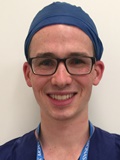
Training Around the World
Orthopaedic Training in Australia
 Kenneth de Jong Kenneth de JongMelbourne, Australia |  |
Australian basic medical training is varied. Traditionally following the UK model, basic medical training included a five or six-year undergraduate degree with direct entry from high school for an MBBS degree attainment. While this model continues in some medical schools, it is being increasingly replaced by a three to four-year postgraduate degree with an MD title awarded, similar to the United States, following a basic science degree.
Following medical school, Post Graduate Year 1 (PGY 1) is designated as the "internship" across all states and territories and includes compulsory rotations in medicine, surgery and emergency care. Entry into certain hospitals is either merit-based or decided through a lottery, depending on the state. Completion of the internship is compulsory to obtain full registration to practice in Australia. For PGY 2 & 3, junior doctors may apply for medical, surgical, generalist or other streams of further training. These years are also known as Hospital Medical Officer (HMO) or "Residency" years, and although candidates may work in areas of interest, they are not formerly trained in any particular specialty.
From PGY 4+ candidates with Orthopaedic interest may apply for entry on to the Orthopaedic training programme (formally known as the Surgical Education and Training (SET) programme) run through the Australian Orthopaedic Association (AOA) and the Royal Australasian College of Surgeons (RACS). Entry onto this programme is based on CV, references from supervisors, Generic Surgical Sciences Examination (GSSE) results and an interview. Successful candidates are then designated the position of accredited registrar and undertake a 5-year training programme to attain a Fellowship of the Royal Australasian College of Surgeons (FRACS).
However, increasingly, candidates are required to apply for work as unaccredited registrars to obtain experience before applying to the training programme. This means that candidates perform similar work to accredited registrars in taking referrals, seeing patients in clinics, assisting and operating in theatre, whilst also helping supervise junior medical officers managing patients on the wards. However, no matter the time a candidate may spend in an unaccredited position, he or she must still complete the formal 5 years of the SET programme, obtain the fellowship and thereby a licence to practice independently as a consultant orthopaedic surgeon.
The SET programme comprises one 12-month and eight 6-month terms, rotating to various metropolitan and rural hospitals with exposure to general orthopaedics, trauma, paediatrics, spine and other subspecialty areas. The registrar must work in a team to ensure optimal management of all patients coming through the hospital orthopaedic department in conjunction with supervising consultants. They must prepare audits, research activities and case presentations, whilst of course gaining the necessary surgical skills through constant assisting and operating with supervision. In addition, formal classes are held fortnightly for all trainees. Separate surgical skills and trauma management courses are also completed as part of the SET. Some of these courses are available to junior doctors prior to beginning formal training and completion of them may aid selection to the program. Completion of the FRACS is based on a written examination and clinical examination, typically taken in the final year of training, as well as completion of a logbook demonstrating sufficient surgical experience.
Following obtainment of the FRACS, surgeons often complete a further 1-2 year fellowship in a subspecialised area to obtain appointment to public hospital positions in metropolitan areas, though this is not technically a requirement.
In 2014, 58 trainees were appointed to the SET programme for commencement in 2015 [1]. As of 2010 there were 1,116 practicing orthopaedic surgeons Australia-wide [2]. Australia continues to be a world leader in the quality of healthcare delivered in both public and private healthcare settings. Thorough training of orthopaedic candidates has ensured high quality and evidence-based practice is delivered to all patients and optimal outcomes are achieved wherever possible.
- Royal Australasian College of Surgeons, Orthopaedic Surgery Australia - Selection Requirements. Updated 31/08/2015. Available from: http://www.surgeons.org/becoming-a-surgeon/surgery-as-a-career/selection-requirements/selection-information-orthopaedic-surgery-australia/
- Royal Australasian College of Surgeons, RACS 2011: Surgical Workforce Projection to 2025 (for Australia). Available from: https://www.surgeons.org/media/437871/rpt_racs_workforce_projection_to_2025.pdf

















